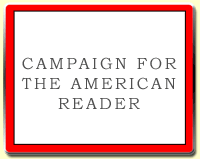 The novelist Richard Gwyn explains how he came up with his list of "books in which things end badly" for the Guardian:
The novelist Richard Gwyn explains how he came up with his list of "books in which things end badly" for the Guardian:"I had already selected this topic for the column when I discovered that an earlier contributor, Elise Valmorbida, had chosen as her subject 10 books with a happy ending. She saw this as a challenge, and it is easy to see why: the unhappy ending is such a profoundly embedded feature of contemporary life and literature.Number One on Gwyn's list:
Our predilection for the sad ending can be traced to the stories of Greek mythology and ... to the Bible, in which I read Christ's torture and execution as an allegory of human suffering in general.
The piece was originally going to be called 10 books with a bad ending until it occurred to me that a 'bad' ending could either be one of catastrophe and malevolence, or else one that is ill-conceived or poorly-written. For the purposes of this list, of course, I meant the former, and consequently changed the title to avoid an (admittedly rather satisfying) ambiguity."
The Bible by various authorsRead about the whole list.
I am thinking specifically of the New Testament here, the gospels, where the protagonist, an illegitimate carpenter from Nazareth, is crucified. By an extraordinary twist of events, this act of crucifixion provided western culture with its predilection for unhappy endings as well as a template for suffering, and a philosophy of childcare and education based on the twin bastions of fear and guilt. The template of the crucifixion presupposes that we all have a personal cross to bear in order to traverse this vale of tears that constitutes our earthly existence. We are told "God so loved the world, that he gave his only begotten Son, that whosoever believeth on him should not perish, but have everlasting life." I don't get it at all. I realise that redemption and eternal life is the pay-off, but what kind of a father sacrifices his own child for an ideal when it is that same father who made up the rules in the first place? And what a horrid way to die, nailed to a cross while stinking legionnaires jibe and scoff. Having said that, it has to be added that the figure of Christ presents the archetype of the wounded healer: what makes you sick can also make you well.
--Marshal Zeringue



